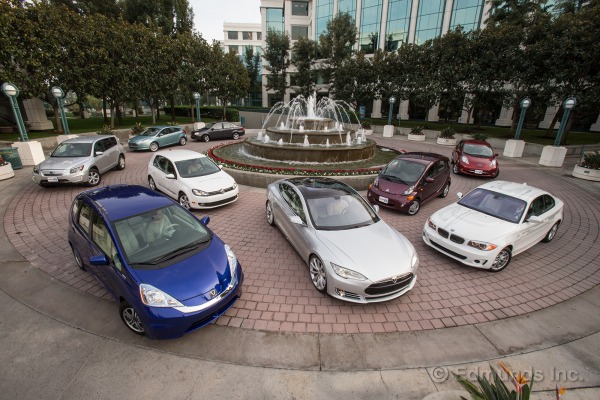
Back in 2006, filmmaker Chris Paine pondered Who Killed the Electric Car? Well, nearly seven years later, the answer is moot because electric cars are very much alive. True, they are definitely in their infancy, or whatever the nascent stage of a resurrection is called. However, those who wish to abandon the internal combustion engine can not only now do it, but actually have choices.
This comparison test is all about those choices. They run the gamut of size, body style and price. There are different ranges, charging times and battery technologies. There are big-time automakers and small-time startups. Given this diverse group, we won't be crowning a winner. There were certainly those that stood out, but this is about describing what each EV brings to the table.
Besides our usual menu of instrumented performance testing, we also conducted extensive range and efficiency tests to see how far these cars can go in the real world. (For details on how we tested, plus charts with lots of additional information, check out our story titled "Testing EVs in the Real World.") And since what you spend on any car doesn't end at the purchase price, we also included a survey of the costs to operate an electric vehicle. Perhaps most importantly, though, we wanted to evaluate these EVs as cars regardless of their power source. For it ultimately doesn't matter if a car has batteries, gasoline, dilithium crystals or whatever: If you don't want to drive it to work every day or take the kids to grandma's house, what's the point?
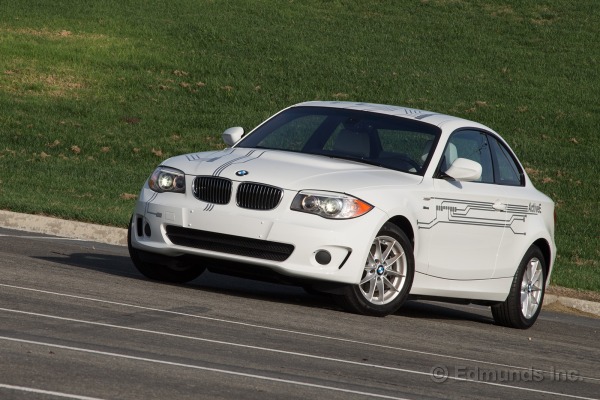
BMW ActiveE: A Driver's EV
The BMW 1 Series Coupe is a special car in its own right, with rear-wheel drive, compact two-door dimensions, sharp handling and robust power. However, replace the 1 Series Coupe engine with a heap of batteries and an electric motor attached to the rear axle, and special suddenly becomes an understatement. And therein describes the BMW ActiveE — an oddball even in this group of oddballs.
The EPA says the ActiveE has a useful range of 94 miles before recharging, and in our testing we exceeded that by another 20 miles or so. That's better than all but the Tesla and Toyota RAV4 EV. Afterward, it took 5 hours and 48 minutes to recharge its lithium-ion batteries.
So the BMW ActiveE proved its worth as an electric car. As a car, period, it embodied the same virtues and detriments as the regular 1 Series. Its steering, brakes and general driving dynamics feel equally sublime, while its cabin is still only suited for two. True, its 0-60 acceleration time of 9 seconds is well off the pace of its gas-powered siblings, but suitably for a BMW, this is still an electric car for drivers. — James Riswick, Automotive Editor
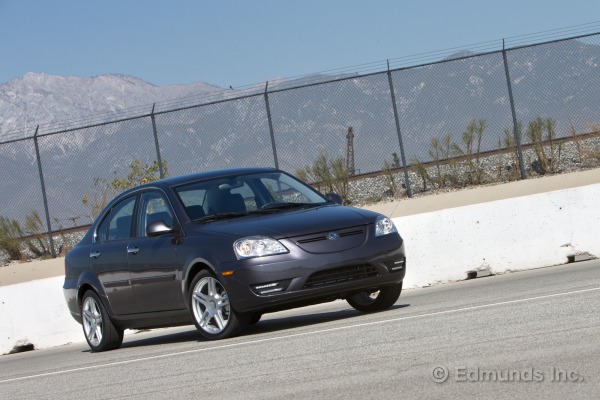
Coda Sedan: Not Quite There
Coda Automotive is a newcomer to the automobile business. The company wanted to present a value for consumers in the market for an electric vehicle. The problem is that its first offering is neither a good value nor a good EV.
The Coda Sedan — notably, it's the only sedan in the non-luxury EV class — has a price that's similar to other models in this test, but it came up short in almost every metric. The EPA estimates that the Coda has a range of 88 miles. The good news is we were able to beat that number by 27 percent in our real-world testing on our suburban city loop. The bad news however, is that it is one of the least efficient electric cars we tested. It is rated at 46 kWh per 100 miles. This means that its cost per mile is higher than the other EVs. There's more bad news. The Coda's interior is bland and low-quality, its braking distances are poor and it has received low marks (two of five stars) in frontal crash testing by the National Highway Traffic Safety Administration.
Finally, if you still want to purchase a Coda, make sure you get pre-approved for a loan or bring cash. At the time of this writing, the automaker does not have a captive finance arm to lease or finance its cars. — Ronald Montoya, Consumer Advice Editor
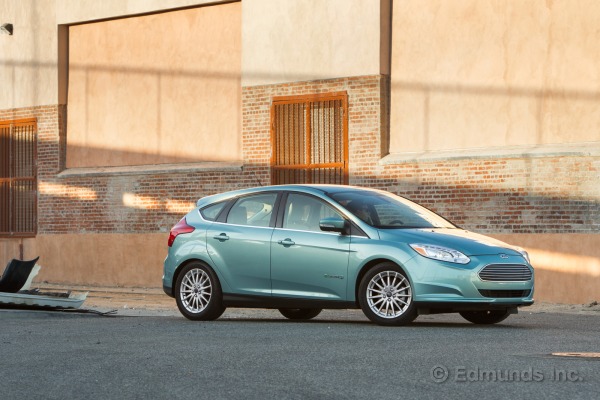
Ford Focus Electric: A Well-Rounded EV
The Ford Focus Electric (it's also called the BEV, or battery electric vehicle) is an electric version of Ford's compact, four-door hatchback. Apart from the source of propulsion, it differs chiefly from its gas-consuming Focus sibling in minor styling details (grille, taillights) and cargo capacity. There's considerably less of that, thanks to the Focus Electric's battery pack behind the rear seats. In other areas, though, this EV is a lot like a regular Focus, with relatively nimble handling and many available high-tech features.
In all of our testing parameters, the Ford Focus BEV fared well against its chief rivals, the Nissan Leaf and the Honda Fit EV. The Ford nips the Nissan in acceleration and braking, while it handily beats it in handling. On our mixed-driving loop, the Focus traveled 99.8 miles and took just 4 hours to recharge afterward. Both numbers are similar to the Fit and superior to the Leaf we tested.
Overall, the Focus impressed us with its overall usability and fault-free EV powertrain. — John DiPietro, Automotive Editor
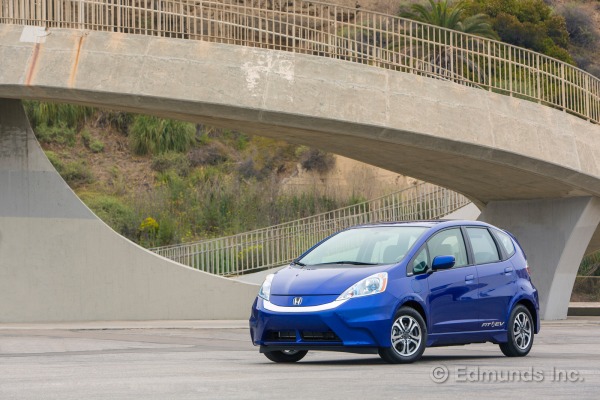
Honda Fit EV: Still Quite Fit
The Honda Fit has earned a loyal following, thanks to its space-efficient design, flexible seating and nimble handling. Some of these qualities are lost in the move to the Fit EV, but it's still an appealing model overall.
The Fit EV does sacrifice versatility for the freedom to motor around on electrons alone. The battery pack under the passenger compartment better spreads the Fit EV's increased weight, but its placement reshapes the floor, forces the rear seat higher and farther back, and eliminates the beloved Magic Seat function and flat load floor.
With 82 miles of rated range, the Fit EV eked out 101.2 miles in our testing and proved to be the most efficient vehicle in our test in terms of electricity consumption. Utilizing the onboard 6.6-kW charger, we recharged the battery in 4 hours from a 240-volt outlet, just like the Focus. The Fit EV is also Honda's quickest Fit, dashing from zero to 60 mph in 8.2 seconds in Sport mode. Even in the Normal setting, it covers zero to 60 in 9.4 seconds, faster than a gasoline Fit with a manual transmission. It's also one of the quietest EVs we tested, more hushed than the VW Golf and nearly as quiet as a Tesla Model S. Unfortunately, the Fit EV is only available on a 36-month lease with no purchase option at the end of term. — Dan Frio, Automotive Editor
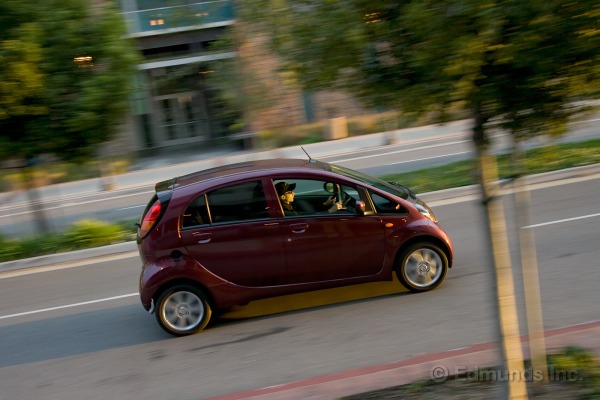
Mitsubishi i MiEV: Lightest, Loudest, Least Range
The Mitsubishi i MiEV is a study in extremes. Compared to its electric kin, this little urban pod is the lightest and least expensive. Yet it also comes with the shortest range (a brief 62 miles) and the noisiest cabin at highway speeds. And then there's the polarizing styling. You either really like the tall, narrow Mitsubishi's quirky packaging or you don't. One positive aspect for that funky look: lots of headroom for tall folks. And it's fairly comfortable, at least in the front seat.
The i MiEV is also the slowest of the cars we surveyed, with a 0-60-mph time several seconds pokier than the next slowest car. It also had one of the longer charging times at 7 hours. Still, at about $30,000, it's a bargain-priced (for an EV) compact car, and it feels like it. The real question: Are you willing to pay a little more for a better range and a much nicer EV experience in one of the Mitsu's competitors? — Bryn MacKinnon, Senior Editor
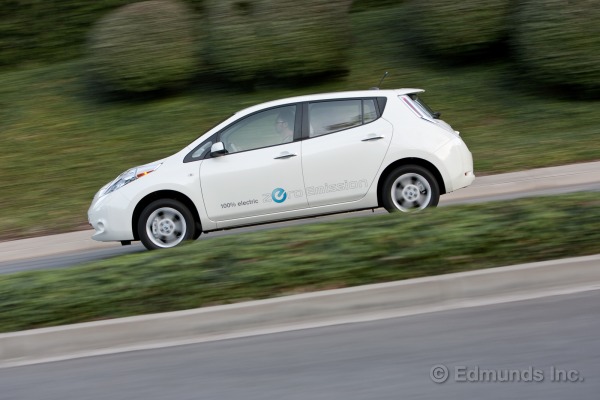
2012 Nissan Leaf: The Pioneer
As the first modern mass-produced EV, Nissan's Leaf has been surpassed in several areas by some of the newer models found in this test. Despite that, the Leaf still holds its ground as an appealing EV.
This midsize five-passenger hatchback can do duty as an everyday commuter or a suburban second car. It takes a backseat to none for roominess, comfort and ease of use. Where it falls down is in performance. The EPA rates the 2012 Leaf at 73 miles of range — it beats only the Mitsubishi i MIEV. The Leaf's 99 mpg-equivalent (MPGe) figure ranks fifth of nine EVs tested. It's also fairly slow, with longer recharge times and pretty mediocre brakes as well.
Nissan hasn't yet released information about the North American version of the 2013 Leaf. But upgrades to the Japanese version hint at improved range of 80-100 miles with a corresponding increase in MPGe, both due largely to improved regenerative braking. Nissan's also expected to replace the slow 3.3kW, 7-hour charger with a 6.6 kW model that will halve recharging times. And look for a new base model with a cheaper starting price. — John O'Dell, Senior Editor
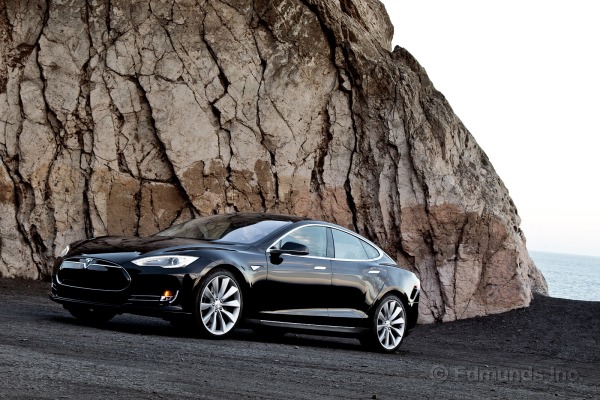
Tesla Model S: Bringing the EV to the Luxury Set
The Tesla Model S represents the best expression of luxury and performance among our group of otherwise mundane EVs. Measuring more than 16 feet long, the Model S is about the size of a Porsche Panamera and weighs more than 4,700 pounds. Despite this, the Model S Signature Performance is very quick, reaching 60 mph in a very rapid 4.3 seconds. Range doesn't suffer either, with EPA estimates of 265 miles on a single charge — a figure we bested in testing.
As one might expect, that range comes courtesy of a rather large battery. But the floor-mounted battery pack — which varies in size depending on the model ordered — takes up minimal passenger space. And as a luxury sedan, there's plenty to like as well. A very large central display dominates the upscale interior design. There's also sufficient room for rear passengers and even the option for rear-facing jump seats, bringing total passenger capacity to seven.
But all of this greatness doesn't come cheap. Our Tesla S Signature Performance test model starts at $94,900 ($87,400 after federal tax credits). Nominal recharge times are also long at public 240-volt charge stations since the battery in the Model S is much bigger than the norm, but Tesla sells special charging equipment that will replace all 265 miles in as little as 5 hours if your garage circuitry can dish out 100 amps. — Mark Takahashi, Automotive Editor
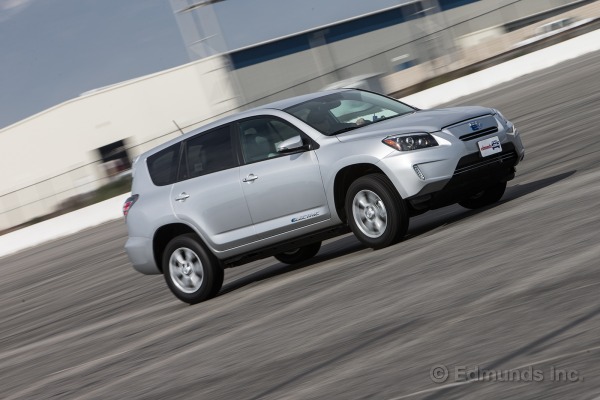
Toyota RAV4 EV: Efficiency and Practicality
Toyota produced an electric RAV4 between 1997 and 2003, but the 2012 Toyota RAV4 EV is very different. By far the biggest change is the involvement of Tesla Motors, which lent its expertise to this RAV4's development.
The RAV4 EV has an EPA range rating of 103 miles, and it easily surpassed that rating during our testing. At the track it dashed from zero to 60 in 7.7 seconds. Both results are second only to Tesla's own Model S wundercar.
The battery hangs under the floor, so there's minimal impact on the RAV4's essential utility, which retains 73 cubic feet of maximum cargo capacity. This low-slung mass also improves handling, but the detached feel of the electric power steering and regenerative braking is something of a buzzkill.
You'll pay close to $50,000 for one, but for that you get an unprecedented combination of range, quickness and cargo capacity. The Tesla Model S may be the supercar in this group, but the RAV4 EV is a super electric car. — Dan Edmunds, Director of Vehicle Testing
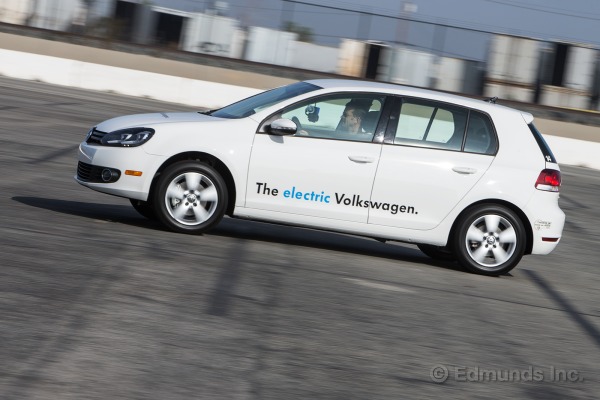
Volkswagen E-Golf Prototype: Undercover Green
The Volkswagen E-Golf won't scream green upon its debut in late 2013/early 2014. It looks and drives much like any other front-wheel-drive Golf; it just happens to be electric. The four-door hatchback seats a family-friendly five. In Edmunds testing, a prototype E-Golf delivered 98.4 miles of range; expect an official 75-80 miles from the EPA. In our testing, its 0-60-mph time, at 10.3 seconds, was competitive with others in this test. Recharge times were slower than expected, however, taking about 6 hours.
Drivers can toggle through three regenerative braking levels, choosing "Sail" mode with no regen up to a setting that slows the car by simply lifting off the accelerator. On the downside, its distance-to-empty gauge shows only 5-mile increments, denying the driver crucial effective range info (every mile counts). No MSRP yet, but VW promises it will be "competitively priced." — Carroll Lachnit, Features Editor
The following cars were not included in our testing this time around, but look for full write-ups when they are available.
Chevrolet Spark EV
True, the Chevrolet Spark EV is pretty small, but it's surprisingly practical. It comes with four doors, seats five and has a backseat that accommodates adults in relative comfort, and as such, it's a fairly practical choice, from the standpoint of versatility.
The Spark EV's electric motor is rated at 130 horsepower and is supported by a 20-kWh lithium-ion battery. It will take you about 7 hours to charge on a dedicated 240-volt line, however, which is longer than the Fit EV or Focus EV. Chevy hasn't yet released specifics regarding the Spark EV's range, except to say that it will be "among the best in the segment." .